Fifth
International Electronic Conference on Synthetic Organic Chemistry (ECSOC-5),
http://www.mdpi.org/ecsoc-5.htm, 1-30 September 2001
[E0039]
MICROWAVE-ENHANCED
DEUTERIATION/TRITIATION STUDIES
J. R. Jones and S. Y. Lu
Department of Chemistry, School of Physics and Chemistry,
University of Surrey, Guildford, Surrey, GU2 7XH UK
E-mail: http://www.mdpi.net/ecsoc-5/e0039/[email protected] and http://www.mdpi.net/ecsoc-5/e0039/[email protected]
Received: 15 August 2001 / Uploaded 22 August 2001
Introduction
Deuterium (2H) and tritium (3H) labelled compounds
continue to play important roles in the physical and life sciences. More
efficient and selective preparation methods are required to keep pace with the
increasing demand from academics and industrialists for such labelled compounds,
and to address legislative and environmental issues such as tighter control of
the amount of radioactivity released to the atmosphere, the cost associated with
the storage and disposal of radioactive waste etc. There are well-established
methods for preparing deuterium/tritium labelled compounds (Table 1).
Deuteriation studies often act as a useful stepping stone for the development of
tritiation procedures. The tritiations are usually performed on a smaller
(e.g. mg rather than g) scale and more attention has to be paid to the
radioactive waste produced.
Table 1 Widely used deuteriation/tritiation procedures
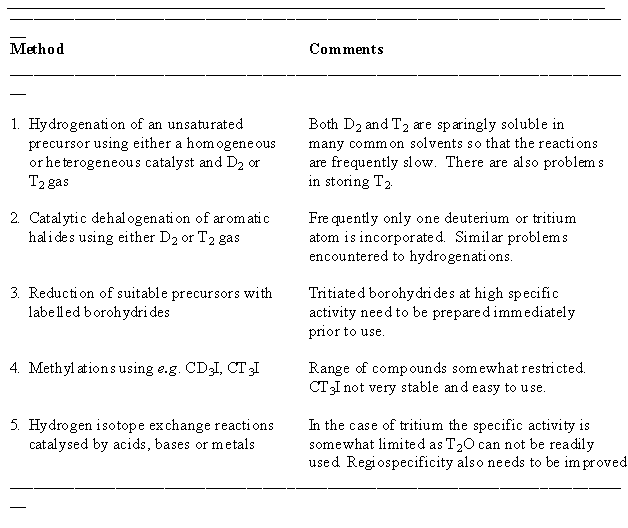
Many of the
important developments that have taken place in catalysis over the last 20 years
have benefited the radiosynthesis area and of these energy-enhanced procedures,
and specifically microwave dielectric heating (2.45 GHz) offers the greatest
potential.1-5 The application of microwaves to radiochemistry has
made the development of faster, cleaner, more selective procedures possible.
Results
Our efforts have covered a wide range of reactions (Table 2), including
hydrogenations, borohydride reductions, aromatic dehalogenations,
decarboxylations and hydrogen isotope exchange reactions.
Table 2 Microwave-enhanced deuteriation/tritiation procedures
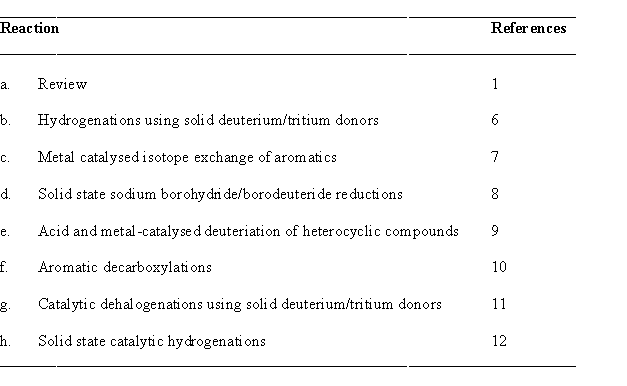
Highlights of the studies are listed below. Reactions were performed in
domestic microwave ovens.
Solid state sodium borohydride/borodeuteride reductions
(For the table of the results, see the pdf
file)
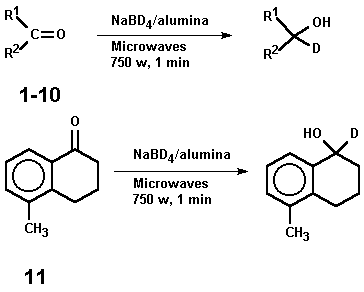
Acid and metal-catalysed deuteriation of heterocyclic compounds
(For the table of the results, see the pdf
file)
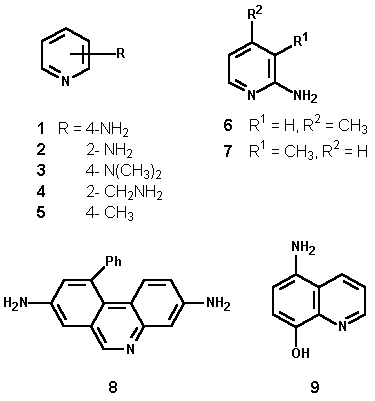
Aromatic decarboxylations

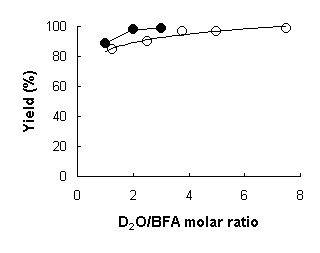
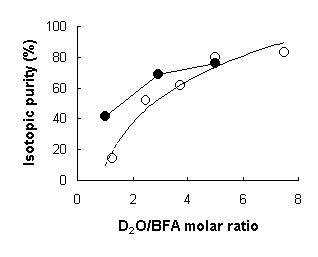
Catalytic dehalogenations using solid deuterium/tritium donors
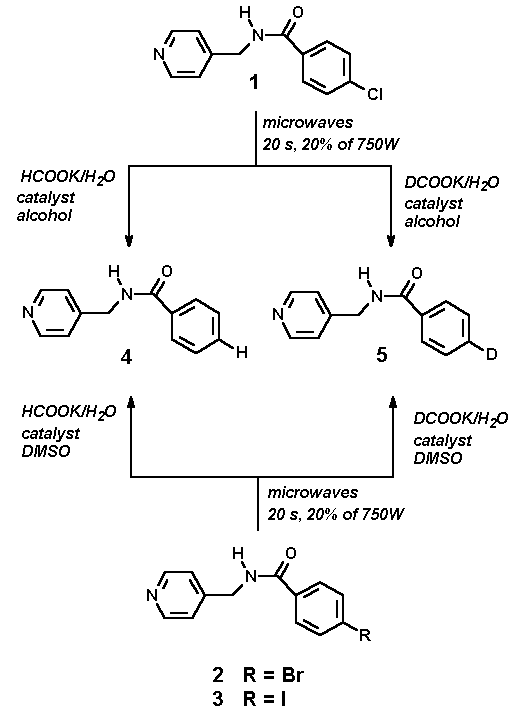
Conclusion
The important point to emerge from these studies is that in addition to
marked accelerations in reaction rates microwaves provide new routes e.g.
where the use of solvents can be avoided, where forming the salts is
adventitious, etc. This new approach to radiosynthesis, which we have
illustrated by reference to deuterium and tritium, may also be of benefit in
other radiosynthetic areas e.g. halogenation reactions.
References
- N. Elander, J. R. Jones, S. Y. Lu and S.
Stone-Elander, Chem. Soc. Rev., 2000, 29, 239.
- P. Lidstrom, J. Tierney, B. Wathey and J. Westman, in
the conference proceedings of Transforming medicinal chemistry,
Cambridge, 12-14 April, 2000.
- R. S. Varma, Green Chem., 1999, 43.
- C. R. Strauss, Aust. J. Chem., 1999, 52,
83.
- F. Langa, P. De La Cruz, A. De La Hoz, A. Diaz-Ortiz
and E. Diez-Barra, Contemp. Org. Syn., 1997, 373.
- M. H. Al-Qahtani, N. Cleator, T. N. Danks, R. N.
Garman, J. R. Jones, S. Stefaniak, A. D. Morgan and A. J. Simmonds, J.
Chem. Res.(S), 1998, 400.
- J. M. Barthez, A. V. Filikov, L. B. Frederiksen, M. L.
Huguet, J. R. Jones and S. Y. Lu, Can. J. Chem., 1998, 76,
726.
- W. Th. Erb, J. R. Jones and S. Y. Lu, J. Chem.
Res(S), 1999, 728.
- S. Anto, G. Getvoldsen, J. R. Harding, J. R. Jones, S.
Y. Lu and J. C. Russell, J. Chem. Soc. Perkin Trans 2, 2000,
2208.
- L. B. Frederiksen, T. H. Grobosch, J. R. Jones, S. Y.
Lu and C. C. Zhao, J. Chem. Res(S), 2000, 42.
- J. R. Jones, W. J. S. Lockley, S. Y. Lu and S. P. Thompson, Tetrahedron
Lett., 2001, 42, 331.
- J. R. Jones and S. Y. Lu, unpublished results.







